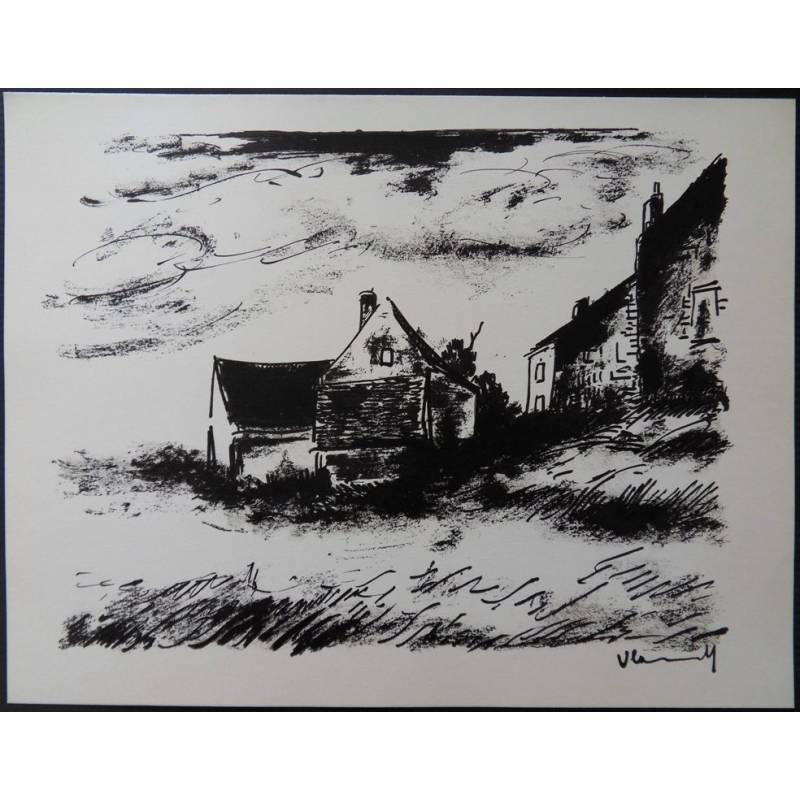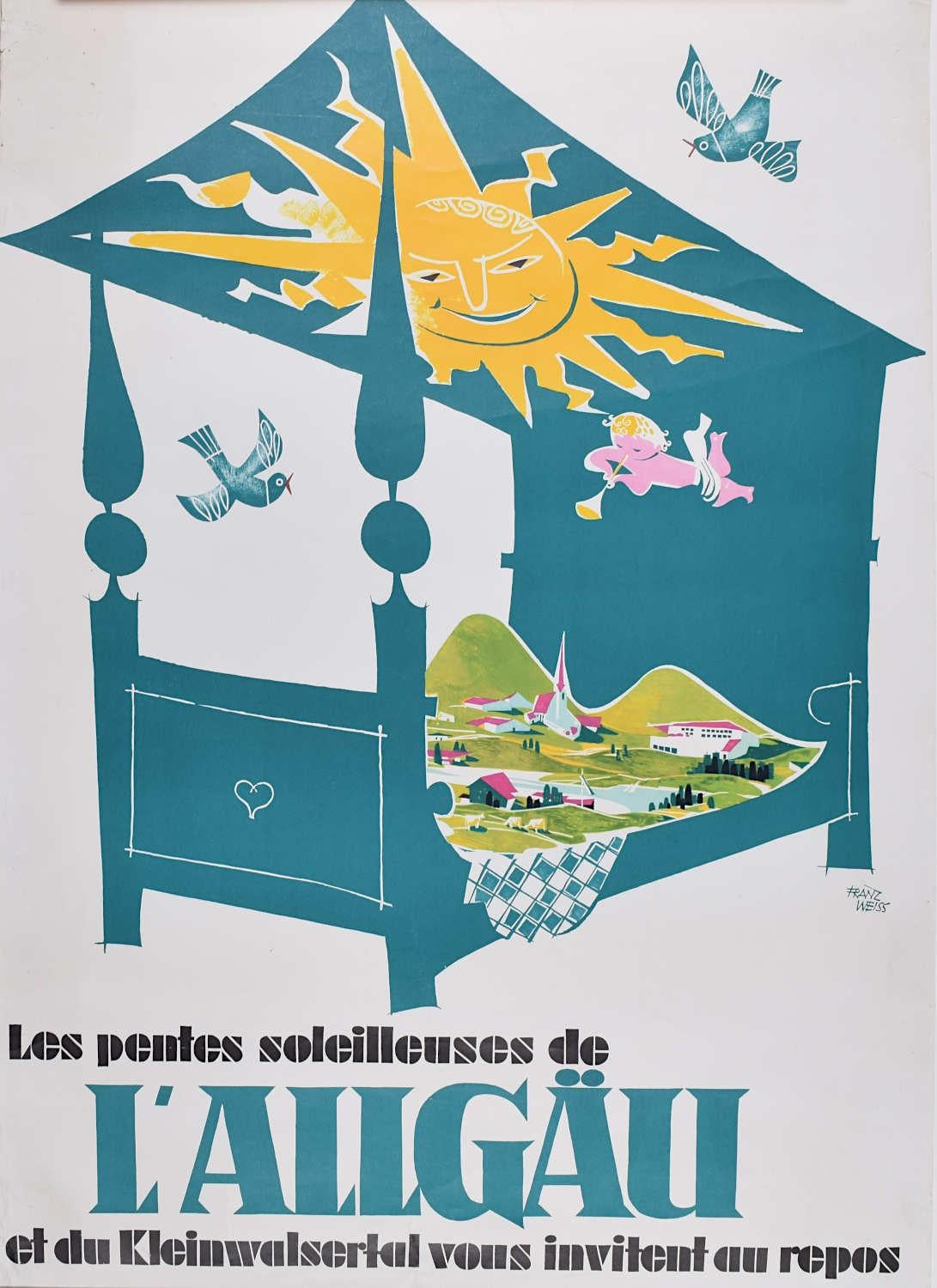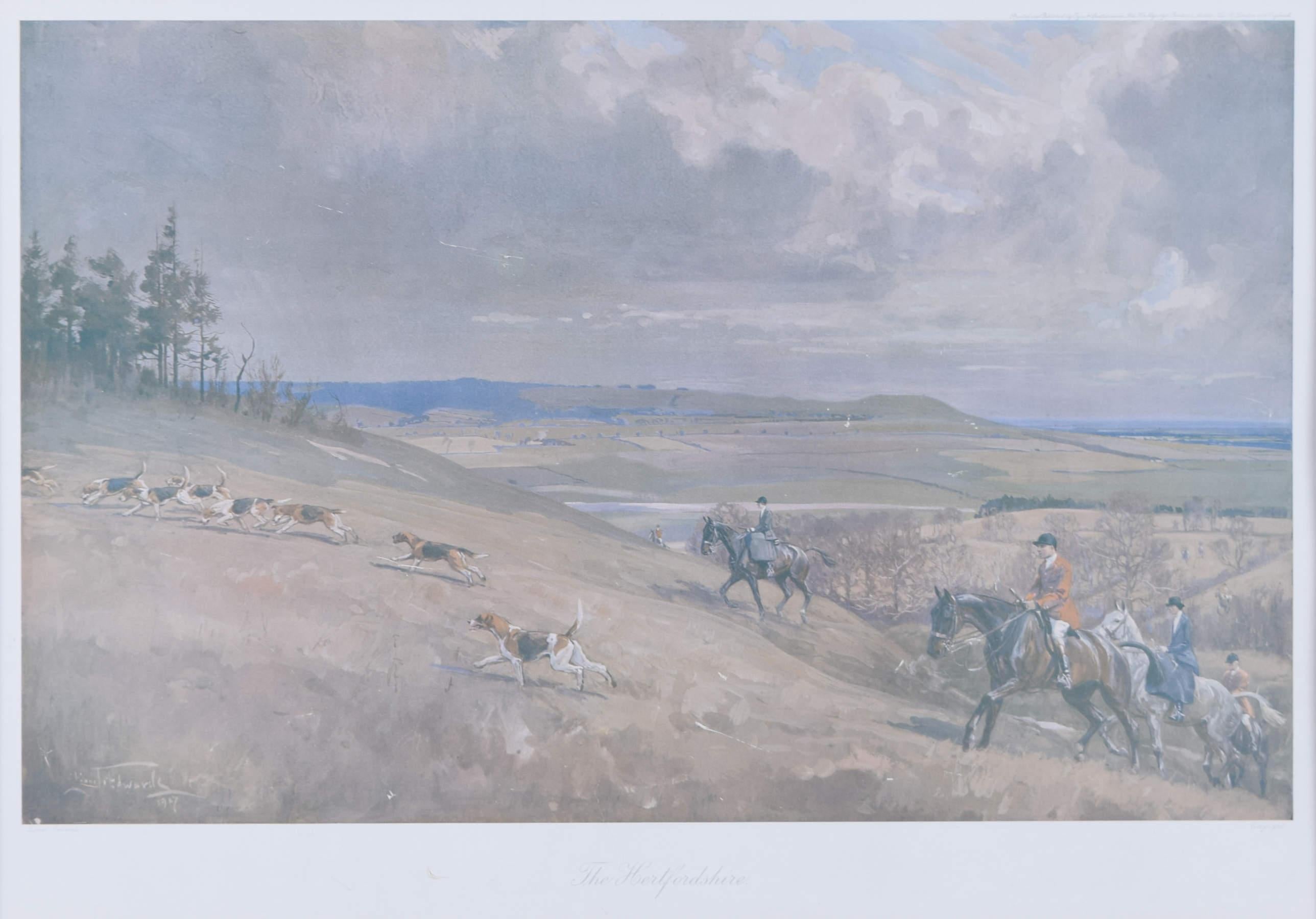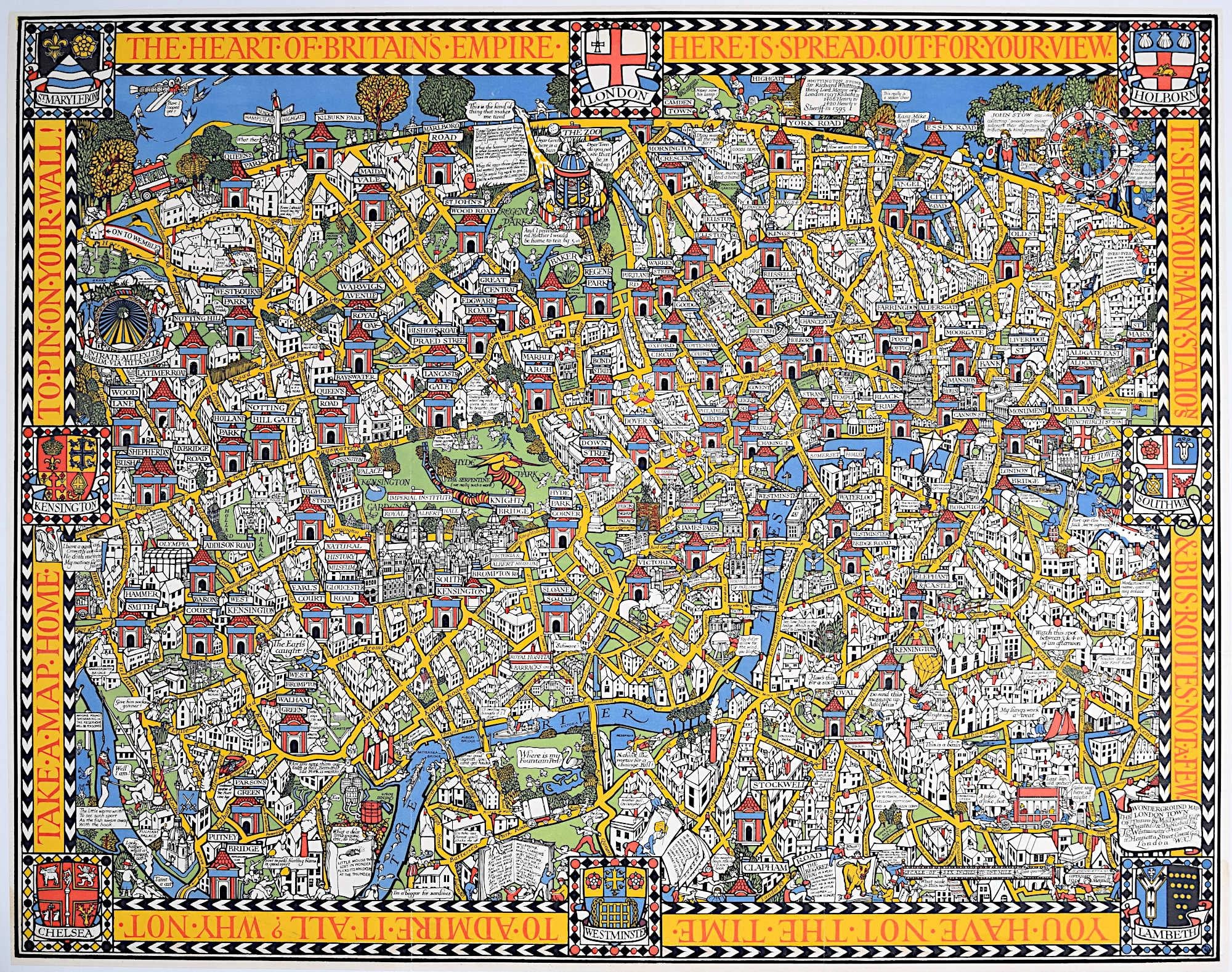Items Similar to 'Navajo Reservation Landscape' — 1940s Southwest Regionalism
Want more images or videos?
Request additional images or videos from the seller
1 of 6
Ira Moskowitz'Navajo Reservation Landscape' — 1940s Southwest Regionalism1945
1945
About the Item
Ira Moskowitz, 'Navajo Reservation Landscape', lithograph, 1945, edition c. 30. Signed and titled in pencil. Signed and dated in the stone, lower left. A fine, richly-inked impression, on cream wove paper, the full sheet with margins (1 3/8 to 2 inches), in excellent condition. Matted to museum standards, unframed.
Image size 12 3/4 x 15 3/4 inches (324 x 400 mm); sheet size: 15 1/2 x 19 inches (394 x 482 mm).
ABOUT THE ARTIST
Ira Moskowitz was born in Galicia, Poland, in 1912, emigrating with his family to New York in 1927. He enrolled at the Art Student's League and studied there from 1928-31. In 1935, Moskowitz traveled to Paris and then lived until 1937 in what is now Israel. He returned to the United States in 1938 to marry artist Anna Barry in New York. The couple soon visited Taos and Santa Fe in New Mexico, returning for extended periods until 1944, when they moved there permanently, staying until 1949. During this especially productive New Mexico period, Moskowitz received a Guggenheim fellowship. His work was inspired by the New Mexico landscape and the state’s three cultures (American Southwest, Native American, and Mexican). He focused on Pueblo and Navajo life, producing an extensive oeuvre of authentic American Indian imagery. He and Anna also visited and sketched across the border in Old Mexico. While in the Southwest, Moskowitz flourished as a printmaker while continuing to produce oils and watercolors. Over 100 of Moskowitz’s works depicting Native American ceremonies were used to illustrate the book American Indian Ceremonial Dances by John Collier, Crown Publishers, New York, 1972.
After leaving the Southwest, printmaking remained an essential medium for the artist while his focus changed to subject matter celebrating Judaic religious life and customs. These works were well received early on, and Moskowitz was content to stay with them the rest of his life. From 1963 until 1966, Moskowitz lived in Paris, returning to New York City in 1967, where he made his permanent home until he died in 2001.
Shortly before his death, Zaplin-Lampert Gallery of Santa Fe staged an exhibition of the artist's works, December 2000 - January 2001. Other one-person shows included the 8th Street Playhouse, New York, 1934; Houston Museum, 1941; and the San Antonio Museum, 1941. The artist’s work was included in exhibitions at the Art Students League, Art Institute of Chicago, Philadelphia Print Club, College Art Association (promotes excellence in scholarship and teaching), and the International Exhibition of Graphic Arts (shown at MOMA, 1955).
Moskowitz’s lithographs of American Indian life are represented in the permanent collections of the Albany Institute of History and Art, Bibliotheque Nationale (Paris), Carnegie Institute (Pittsburgh), Houston Museum, Library of Congress, McNay Art Museum, Metropolitan Museum of Art, New Mexico Museum of Art, New York Public Library, Museum of Modern Art, Smithsonian American Art Museum, and the Whitney Museum of American Art.
- Creator:Ira Moskowitz (1912, American)
- Creation Year:1945
- Dimensions:Height: 12.75 in (32.39 cm)Width: 15.75 in (40.01 cm)
- Medium:
- Period:
- Condition:
- Gallery Location:Myrtle Beach, SC
- Reference Number:
About the Seller
5.0
Recognized Seller
These prestigious sellers are industry leaders and represent the highest echelon for item quality and design.
Platinum Seller
These expertly vetted sellers are 1stDibs' most experienced sellers and are rated highest by our customers.
Established in 1995
1stDibs seller since 2016
258 sales on 1stDibs
Typical response time: 1 hour
Associations
International Fine Print Dealers Association
- ShippingRetrieving quote...Ships From: Myrtle Beach, SC
- Return PolicyA return for this item may be initiated within 7 days of delivery.
More From This SellerView All
- 'Manhattan 1, stone 2' — New York City, Mid-Century ModernismBy Lyonel FeiningerLocated in Myrtle Beach, SCLyonel Feininger, 'Manhattan 1, stone 2', lithograph, 1951, edition 25. Prasse L 16. Titled 'Manhattan I and Stone II' in pencil, in the bottom right sheet edge. A fine impression on off-white Rives wove paper, with full margins (1 1/2 to 2 3/4 inches), in excellent condition. Scarce. Image size 11 1/4 x 8 5/8 inches (286 x 219 mm); 16 x 11 1/2 sheet size: inches (406 x 292 mm). Matted to museum standards, unframed. ABOUT THIS WORK Feininger produced only 20 lithographs throughout his prolific career—a handful of much earlier works created from 1906-12 were never editioned, with only a few proofs providing a record of those formative experiments. The success of his signature work, 'Off the Coast, Stone 3' created in 1951 for the Print Club of Cleveland, led the artist to produce five other lithographs from 1951-1955 printed by master lithographer George C. Miller as was the Print Club edition. Impressions of this work are held in the collections of the Boston Public Library, Cambridge Fine Arts Museum, Cleveland Museum of Art, Bezalel National Art Museum (Jerusalem), Philadelphia Museum of Art, and the Washington Library of Congress. ABOUT THE ARTIST Lyonel Feininger (1871-1956) was born in New York City into a musical family—his father was a violinist and composer, his mother was a singer and pianist. He studied violin with his father, and by the age of 12, he was performing in public. Still, he also drew incessantly, most notably the steamboats and sailing ships on the Hudson and East Rivers, and the landscape around Sharon, Conn., where he spent time on a farm owned by a family friend. At the age of 16 he left New York to study music and art in Germany, from where his parents emigrated. Drawn more to the visual arts, he attended schools in Hamburg, Berlin, and Paris from 1887 to 1892. After completing his studies, Feininger began his artistic career as a cartoonist and illustrator, his originality leading him to great success. In 1906, after working for a dozen years in Germany, he was offered a job as a cartoonist at the Chicago Tribune, the largest circulation newspaper in the Midwest. He worked there for a year, inventing what became the standard design for the comic strip: in the words of John Carlin, “an overall pattern. . . that allowed the page to be read both as a series of elements one after the other, like language and as a group of juxtaposed images, like visual art.” His originality did not end there: he went on to become one of the great abstract painters. Like Kandinsky, music was his model, but Kandinsky only knew music from the outside—as a listener (inspired initially by Wagner, then by Schoenberg)—while Feininger knew it from the inside. He lived in Paris from 1906 to 1908, during which time he met and was influenced by the work of progressive painters Robert Delaunay and Jules Pascin, as well as that of Paul Cezanne and Vincent van Gogh. He began painting full-time, developing his distinctive Iyrical style based on Cubist and Expressionist idioms and a concern for the emotive qualities of light and color. He exhibited with the Der Blaue Reiter group in 1913, and in 1917, he had his first solo exhibition at Galerie Der Sturm in Berlin. One year after his solo exhibition, in 1918, Feininger began making woodcuts. He became enamored with the medium, producing an impressive 117 in his first year of exploring the printmaking medium. In 1919 at the invitation of the architect Walter Gropius, he was appointed the first master at the newly formed Staatliches Bauhaus in Weimar. His woodcut of a cathedral...Category
1950s Bauhaus Landscape Prints
MaterialsLithograph
- 'Partners' — Mid-Century Modernist RegionalismBy Dale NicholsLocated in Myrtle Beach, SCDale Nichols, 'Partners', lithograph, edition 250, 1950. Signed in pencil. A fine, richly-inked impression, on cream wove paper; the full sheet with margins (7/8 to 1 5/8 inches); tw...Category
1950s American Modern Landscape Prints
MaterialsLithograph
- 'Pulitzer Fountain, Evening" — 1940s American Modernism, New York CityBy Ellison HooverLocated in Myrtle Beach, SCEllison Hoover, 'Pulitzer Fountain, Evening', lithograph, circa 1940, edition c. 40. Signed in pencil. A fine, atmospheric impression, on cream wove paper; the full sheet with margins (1 1/2 to 4 5/16 inches), in excellent condition. Archivally matted to museum standards, unframed. Image size 12 1/2 x 9 5/8 inches (318 x 244 mm); sheet size 16 1/4 x 12 1/4 inches (413 x 311 mm). ABOUT THE SUBJECT The Pulitzer fountain was commissioned as a bequest by Joseph Pulitzer, newspaper publisher and founder of the Columbia School of Journalism. Designed by Austrian sculptor Karl Bitter...Category
Mid-20th Century American Modern Landscape Prints
MaterialsLithograph
- Angry Skies (Andante Cantabile) — Central Park, New York CityBy Louis LozowickLocated in Myrtle Beach, SCLouis Lozowick, 'Angry Skies (Andante Cantabile)', lithograph, 1935; edition 10, AAA 250; Flint 123. Signed in pencil. Signed in the stone, lower left. A fine, richly-inked impressio...Category
1930s American Modern Landscape Prints
MaterialsLithograph
- 'Navajo Courtship Dance' — 1940s Southwest RegionalismBy Ira MoskowitzLocated in Myrtle Beach, SCIra Moskowitz, 'Navajo Courtship Dance (Squaw Dance)', lithograph, 1946, edition 30, Czestochowski 161. Signed and titled in pencil. Signed and dated in the stone, lower left. A fine, richly-inked impression, on cream wove paper; the full sheet with margins (7/16 to 2 3/4 inches). Pale mat line, otherwise in excellent condition. Matted to museum standards, unframed. Image size 11 13/16 x 14 13/16 inches (300 x 376 mm); sheet size 13 1/16 x 20 1/8 inches (332 x 511 mm). ABOUT THE ARTIST Ira Moskowitz was born in Galicia, Poland, in 1912, emigrating with his family to New York in 1927. He enrolled at the Art Student's League and studied there from 1928-31. In 1935, Moskowitz traveled to Paris and then lived until 1937 in what is now Israel. He returned to the United States in 1938 to marry artist Anna Barry in New York. The couple soon visited Taos and Santa Fe in New Mexico, returning for extended periods until 1944, when they moved there permanently, staying until 1949. During this especially productive New Mexico period, Moskowitz received a Guggenheim fellowship. His work was inspired by the New Mexico landscape and the state’s three cultures (American Southwest, Native American, and Mexican). He focused on Pueblo and Navajo life, producing an extensive oeuvre of authentic American Indian imagery. He and Anna also visited and sketched across the border in Old Mexico. While in the Southwest, Moskowitz flourished as a printmaker while continuing to produce oils and watercolors. Over 100 of Moskowitz’s works depicting Native American ceremonies were used to illustrate the book American Indian Ceremonial Dances by John Collier, Crown Publishers, New York, 1972. After leaving the Southwest, printmaking remained an essential medium for the artist while his focus changed to subject matter celebrating Judaic religious life and customs. These works were well received early on, and Moskowitz was content to stay with them the rest of his life. From 1963 until 1966, Moskowitz lived in Paris, returning to New York City in 1967, where he made his permanent home until he died in 2001. Shortly before his death, Zaplin-Lampert Gallery of Santa Fe staged an exhibition of the artist's works, December 2000 - January 2001. Other one-person shows included the 8th Street Playhouse, New York, 1934; Houston Museum, 1941; and the San Antonio Museum, 1941. The artist’s work was included in exhibitions at the Art Students League, Art Institute of Chicago, Philadelphia Print Club, College Art Association (promotes excellence in scholarship and teaching), and the International Exhibition of Graphic Arts (shown at MOMA, 1955). Moskowitz’s lithographs of...Category
1940s American Modern Landscape Prints
MaterialsLithograph
- 'Navajo Medicine Ceremony of the Night Chant' — 1940s Southwest RegionalismBy Ira MoskowitzLocated in Myrtle Beach, SCIra Moskowitz, 'The Three Gods of Healing (Navajo Medicine Ceremony of the Night Chant)', lithograph, 1945, edition 30, Czestochowski 148. Signed and titled in pencil. Signed and dated in the stone, lower right. A fine, richly-inked impression, on cream wove paper, with full margins (2 1/4 to 2 3/4 inches), in excellent condition. Matted to museum standards, unframed. Image size 12 1/4 x 15 13/16 inches (311 x 402 mm); sheet size 17 1/8 x 20 7/8 inches (435 x 530 mm). ABOUT THIS WORK The nine-night ceremony known as the Night Chant or Nightway is believed to date from around 1000 B.C.E. when it was first performed by the Indians who lived in Canyon de Chelly (now eastern Arizona). It is considered the most sacred of all Navajo ceremonies and one of the most difficult and demanding to learn, as it encompasses hundreds of songs, dozens of prayers, and several highly complex sand paintings. And yet the demand for Night Chants is so great that as many as fifty such ceremonies might be held during a single winter season, which lasts eighteen to twenty weeks. The Night Chant is designed both to cure people who are ill and to restore the order and balance of human and non-human relationships within the Navajo universe. Led by a trained medicine man who has served a long apprenticeship and learned the intricate and detailed practices that are essential to the chant, the ceremony itself is capable of scaring off sickness and ugliness through techniques that shock or arouse. Once the disorder has been removed, order and balance are restored through song, prayer, sand painting, and other aspects of the ceremony. The medicine men who supervise the Night Chant ensure that everything—each dot and line in every sand painting, each verse in every song, each feather on each mask is arranged precisely, or it will not bring about the desired result. There are probably as many active Night Chant medicine men today as at any time in Navajo history due to the general increase in the Navajo population, the popularity of the ceremony, and the central role it plays in Navajo life and health. ABOUT THE ARTIST Ira Moskowitz was born in Galicia, Poland, in 1912, emigrating with his family to New York in 1927. He enrolled at the Art Student's League and studied there from 1928-31. In 1935, Moskowitz traveled to Paris and then lived until 1937 in what is now Israel. He returned to the United States in 1938 to marry artist Anna Barry in New York. The couple soon visited Taos and Santa Fe in New Mexico, returning for extended periods until 1944, when they moved there permanently, staying until 1949. During this especially productive New Mexico period, Moskowitz received a Guggenheim fellowship. His work was inspired by the New Mexico landscape and the state’s three cultures (American Southwest, Native American, and Mexican). He focused on Pueblo and Navajo life, producing an extensive oeuvre of authentic American Indian imagery. He and Anna also visited and sketched across the border in Old Mexico. While in the Southwest, Moskowitz flourished as a printmaker while continuing to produce oils and watercolors. Over 100 of Moskowitz’s works depicting Native American ceremonies were used to illustrate the book American Indian Ceremonial Dances by John Collier, Crown Publishers, New York, 1972. After leaving the Southwest, printmaking remained an essential medium for the artist while his focus changed to subject matter celebrating Judaic religious life and customs. These works were well received early on, and Moskowitz was content to stay with them the rest of his life. From 1963 until 1966, Moskowitz lived in Paris, returning to New York City in 1967, where he made his permanent home until he died in 2001. Shortly before his death, Zaplin-Lampert Gallery of Santa Fe staged an exhibition of the artist's works, December 2000 - January 2001. Other one-person shows included the 8th Street Playhouse, New York, 1934; Houston Museum, 1941; and the San Antonio Museum, 1941. The artist’s work was included in exhibitions at the Art Students League, Art Institute of Chicago, Philadelphia Print Club, College Art Association (promotes excellence in scholarship and teaching), and the International Exhibition of Graphic Arts (shown at MOMA, 1955). Moskowitz’s lithographs of...Category
1940s American Modern Landscape Prints
MaterialsLithograph
You May Also Like
- Maurice de Vlaminck - House in Rueil - Original LithographBy Maurice de VlaminckLocated in Collonge Bellerive, Geneve, CHMaurice de Vlaminck Original Lithograph Signed in the plate 1958 Title: House in Beauce Dimensions: 22 x 27 cm Reference: Catalogue raisonné Walterskirchen 275 Condition : Excellent Maurice de Vlaminck (1876 - 1958) Maurice was three years old when his family moved from Paris to Vésinet. He first pursued the same musical career as his parents, who were both musicians, leaving his home as a trained double-bass player in 1892 to move to Chatou near Versailles. After absolving his military service in Vitré Maurice Vlaminck worked as a musician until he accidentally met André Derain in 1900. It was Derain who kindled Vlaminck's artistic ambitions. He decided to become a painter and rented an old hut in which he and Derain shared a studio. A crucial turning point in Vlaminck's artistic development was a visit to a van Gogh exhibition...Category
1950s Impressionist Landscape Prints
MaterialsLithograph
- Toulouse Lautrec Original Lithograph Famous Political 1800s Collection SignedBy Henri de Toulouse-LautrecLocated in Milwaukee, WI"Lautrec Book: From Au Pied du Sinai written by Georges Clemenceau" lithographs created by the legendary Henri de Toulouse-Lautrec. This book, Au Pied...Category
1890s Post-Impressionist Figurative Prints
MaterialsLithograph, Mulberry Paper
- L'Allgäu Schwabia, Germany, Original Vintage Poster Franz Weiss c.1955Located in London, GBTo see our other original vintage travel posters, scroll down to "More from this Seller" and below it click on "See all from this Seller" - or send us a message if you cannot find the poster you want. Franz Weiss...Category
1950s Modern Landscape Prints
MaterialsLithograph
- The Hertfordshire Hunt fox hunting print by Lionel EdwardsBy Lionel EdwardsLocated in London, GBTo see our other hunting pictures, scroll down to "More from this Seller" and below it click on "See all from this Seller" and then search. Lionel Ed...Category
1920s Landscape Prints
MaterialsLithograph
- Beached SailboatsBy Jean-Claude QuiliciLocated in Houston, TXFrench lithograph of boats at low tide by artist Jean Claude Quilici, circa 1960. Signed lower right. 37/175 Original artwork on paper displayed ...Category
1960s Landscape Prints
MaterialsLithograph
- Wonderground Map of London by MacDonald 'Max' Gill c. 1924 original posterBy "Leslie MacDonald ""Max"" Gill"Located in London, GBTo see our other original vintage posters and views of London (including original paintings), scroll down to "More from this Seller" and below it click on "See all from this Seller" ...Category
1920s Modern Landscape Prints
MaterialsLithograph
Recently Viewed
View AllMore Ways To Browse
Navajo Artists
Southwest Stone
American Indian Dance
John Barry
Anna Stone
Native Indian Lithograph
Native American Indian Lithographs
Southwest Lithographs
Authentic Native American
Native Ceremonial
Native American Indian Dancers Art
Native American Ceremonial
Southwest Pueblo
Santa Anna
Collier Dior Vintage
Playhouses Used
Taos Pueblo
New Mexico Taos Pueblo




